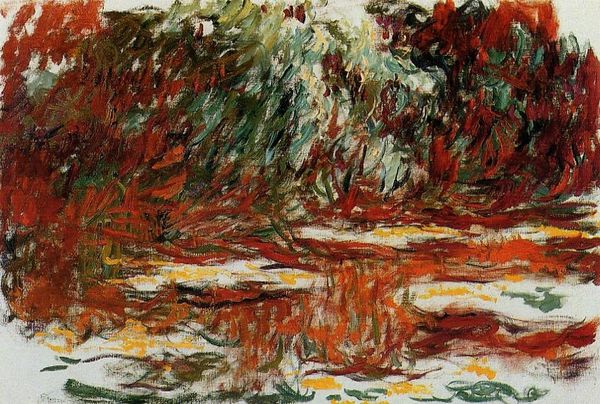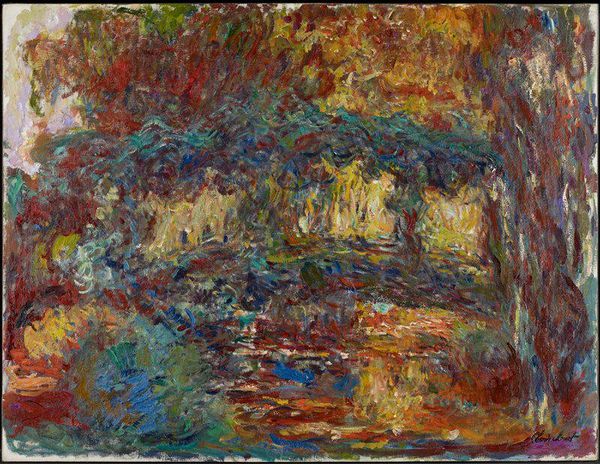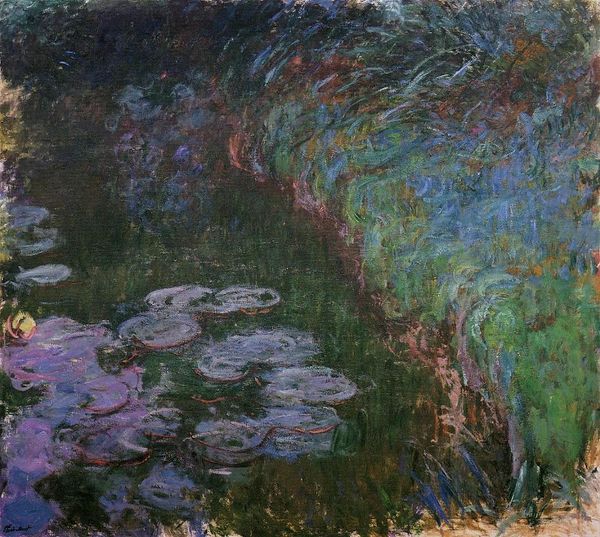
Copyright: Public domain
Claude Monet captured this Japanese bridge in oil with dabs of light and color. The bridge itself, an emblem of connection, arches gracefully, evoking a sense of harmony between nature and human creation. The motif of the bridge is ancient, appearing in Roman architecture as a symbol of imperial power, in Medieval art as a passage to the divine, and here, transformed. Monet’s bridge merges Eastern aesthetics with Western Impressionism. It recalls the covered wooden bridges of Japan, symbols of transition and tranquility, but also echoes the arched vaults of Renaissance structures. This synthesis speaks to a deep-seated human desire for unity and connection. Observe how the water lilies mirror the bridge’s form, creating a cyclical rhythm. This recalls the Uroboros, the ancient symbol of a snake eating its tail, representing eternal return and the cyclical nature of life. It’s as if the bridge, in its reflection, is both beginning and end, a continuous loop of existence. These submerged memories resurface through the artist's hand, engaging viewers with an image that resonates on a primordial, subconscious level.
Comments
No comments
Be the first to comment and join the conversation on the ultimate creative platform.













